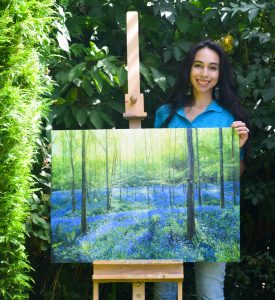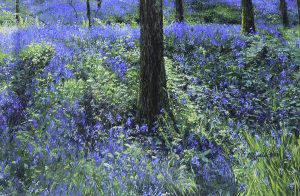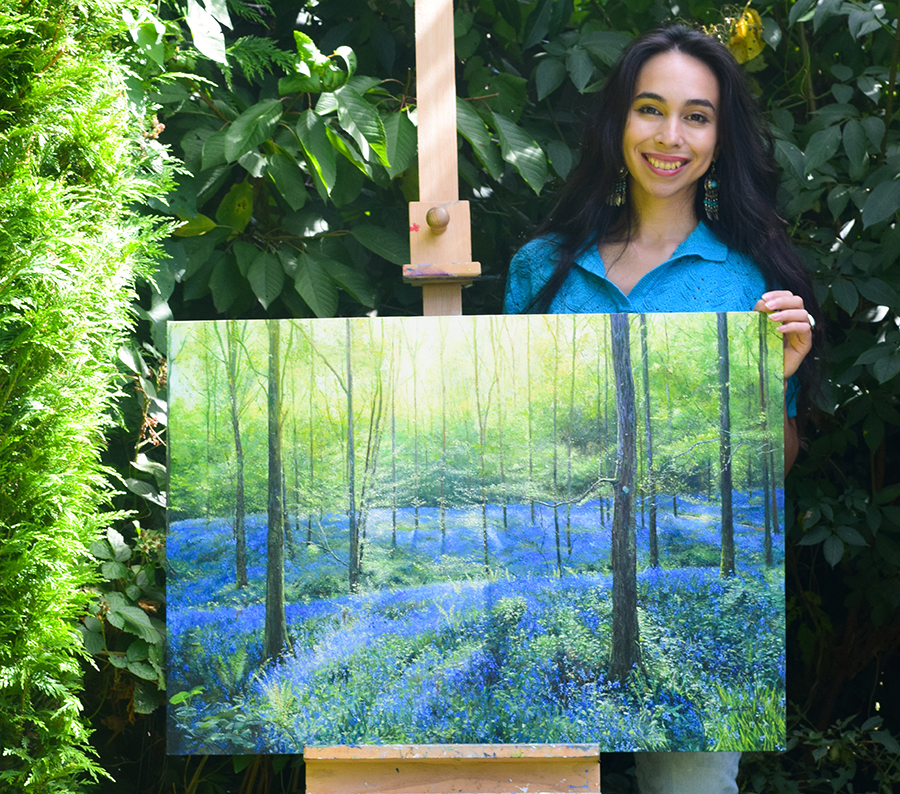ပန္းခ်ီဆရာၾကီး ဦးသုခ ႏွစ္ ၁၀၀ ျပည့္ ပန္းခ်ီျပပြဲ
I’m honoured to have been invited by my friend, internationally renowned Burmese artist Min Wae Aung, to join him in an art exhibition celebrating the centenary birth year of Saya U Thu Kha (1918-2007), a seminal figure in the arts movement in Myanmar and a teacher of Min Wae.
The exhibition, comprised of international artists, will take place at The Strand Hotel (Ballroom) in Yangon, from 13-15 November 2018.
My work has actually been held at Min Wae’s gallery, the New Treasure Art Gallery in Yangon since the beginning of August 2018 before it is exhibited at The Strand.
Thank you to Min Wae, who provided the biographical information and resources related to this article on Saya U Thu Kha.
SAYA U THU KHA
Born Muang Thu Kha on 11 November 1918, his family lived in the west end of Yangon and owned a food stall at Scott Market, now renamed Bo Gyoke Market. His parents, U Pu and Daw Mya Hnit had no artists among their ancestors but they were related to those involved in art; his mother was a niece of Daw Mya Shwe, a cousin of Daw Mya May, the wife of a commissioner who strongly supported the art movement and is known as the Mother of Myanmar art.
Whilst under British colonialism in 1910, nationalism and political awareness began to take root in Myanmar, propelling literature and the arts into the 1920s. Various national newspapers hired Myanmar illustrators, increasing public awareness of the art movement. After the country’s first strike, Daw Mya May and her husband U Hla Aung opened a Buddhist Middle school for boys on Pagoda Road in Yangon and one for girls on Canal Street; U Thu Kha attended his great aunt’s Buddhist Middle School for boys when he was of school age. Whilst studying, his growing interest in the arts could not be contained. He broke school rules during 6th grade by covering the school’s freshly painted latrine walls with his drawings which resulted in a harsh caning from his teacher that was so severe the school doctor was called and he spent the next three days to recover. Upon his return, he explained to the teacher that his passion for art compelled him to paint. Seemingly regretful, his teacher immediately wrote a note for Muang Thu Kha giving him permission to attend classes at the Burma Art Club and become a life member until 1928 without paying any fees. It seems this incident had unexpectedly opened a door to his future.
In pre-war years, Muang Thu Kha was the general secretary of the art club of the State High School for four years. He entered the annual competition for art, crafts and technology held at the Jubilee Hall in Shwedagon Pagoda Road, and won gold medals and prizes every year; he also exhibited in artist group shows sponsored by U Ba Nyan at the Burma Art Club. Aside from painting, he was a talented sportsman, playing football, basketball and boxing. His father’s uncle was a famous athlete of the time, U Ba Than (Sando).
He became a teacher in 1938, passing the examination held by the all Burma Education and Information Department. After independence in 1948, he became a member of the newly established Artists and Sculptors Union. He was the in-house illustrator of the English-language version of the New Times of Burma and the weekly Business Review in 1950. In 1952, he participated in an art exhibition held on the premises of the Rangoon Gazette Press on Bo Aung Kyaw Street (now the offices of Myanmar Times), at the Sarpay Beikhman Art Exhibition in 1959 and later at the annual art exhibition held at the Envoy Hall (now the Tatmadaw Hall) by the National Art and Sculpture Council.
In 1963 he was inaugurated as an instructor at the Yangon State School of Fine Arts, later becoming a principle until his retirement in 1984. He was known to be very patient, teaching his students basic skills and anatomy, emphasising their need to draw first in pencil before using colours. Whether they were good or bad, he treated his students as friends, often buying them tea, meals or a bus fare. In 1972, he studied block printing and mosaic in Germany and then toured Egypt. Whilst he was teaching at the SSFA Yangon, he was also taking classes at the Rangoon University Art Club. Until his death, he served as the patron of the Traditional Artists and Artisans association. In 1997 he was awarded an honorary professorship by the Department of Fine Arts.
When his student, Min Wae Aung, opened the New Treasure Art Gallery, U Thu Kha acted as patron, coming there to paint regularly until his very last days. After suffering a brain haemorrhage in 2000, he came three days a week to the gallery, painting every time he came.
Aside from painting, he wrote articles and books on art. One well received publication was his translated book ‘International Methods of Figure Drawing,’ complete with illustrations.
A popular teacher, his students had begun paying homage to him through an annual Homage ceremony to Elder Artists from 1978 until 2006, twenty nine years in total. Initially they went to his house but later changed the venue to the New Treasue Art Gallery after it was established.
Saya U Thu Kha is known to be one of two Burmese artists, the other Saya U Thein Han, to teach art well into their retirement years. Compelled by the desire to further the arts in Myanmar, both artists opened private classes after retiring from teaching.
Many of his students achieved fame, including Min Wae Aung, Thein Shwe Kyi, Win Thaw, Ngwe Kyi, Shwe Min Thar, Zaw Min and Aung Min Thein amongst others.
U Thu Kha passed away in 2007 at the age of 89 and is survived by his wife Daw Khin Ohn and their eleven children. Long may his legacy continue.
My contribution to the exhibition is a 1m oil painting on canvas board, entitled
‘Bluebell Woods’:


